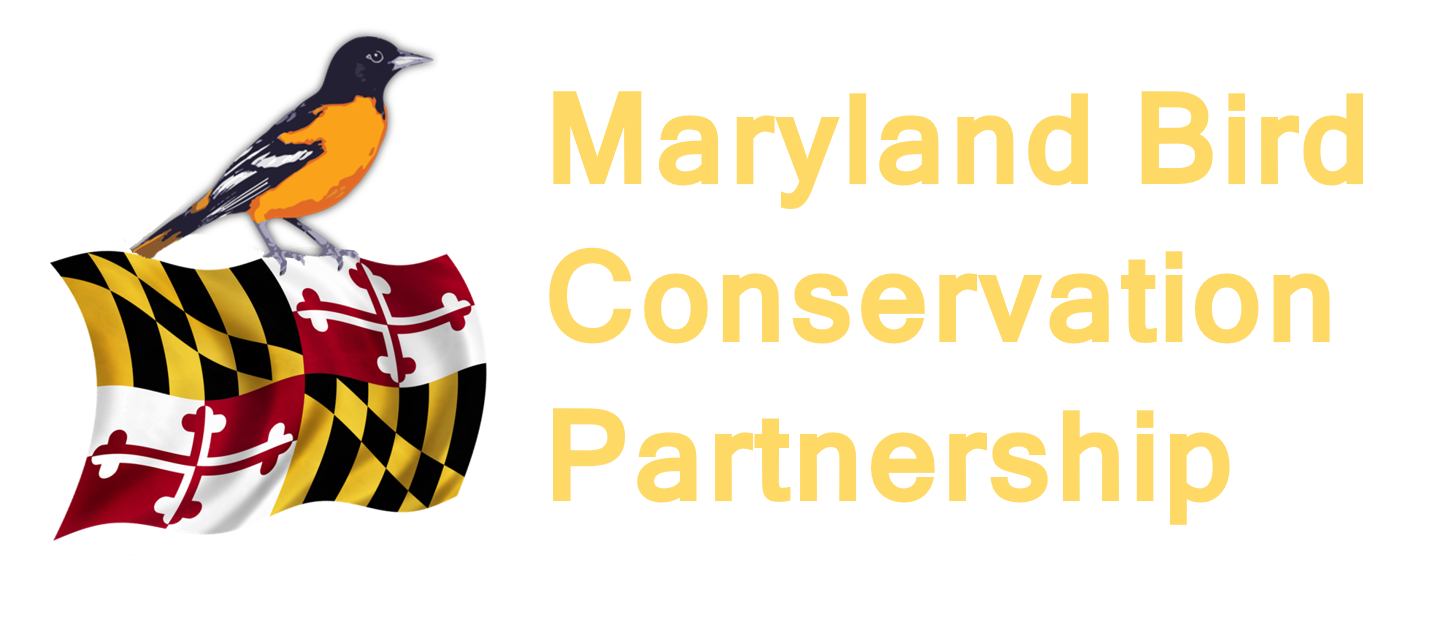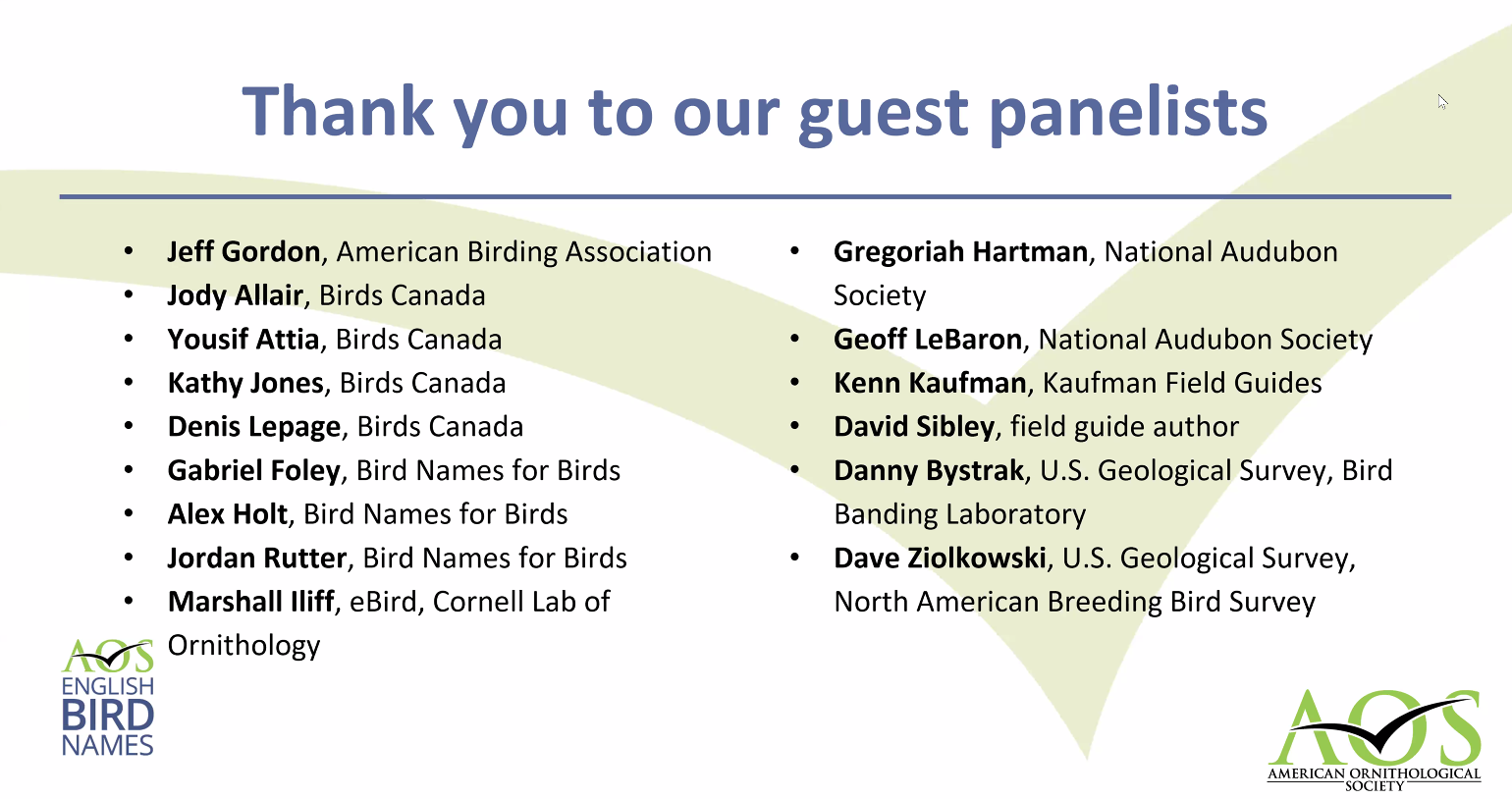Maryland Bird Conservation Update - April 2021
17-Year Periodical Cicada & the Breeding Bird Atlas
The second season of the third MD-DC Breeding Bird Atlas (BBA3) is in full swing. The soon-to-emerge 17-year cicada Brood X (“Brood Ten”) provides a unique opportunity to document which bird species will be feasting on these cicadas. Surprisingly, there hasn’t been a large number of species actually documented in the literature feeding on cicadas. A list of documented species includes American Kestrel, Black- and Yellow-billed Cuckoos, Red-headed Woodpecker, Red-eyed Vireo, Blue Jay, American Crow, Tufted Titmouse, Wood Thrush, American Robin, European Starling, Red-winged Blackbird, Common Grackle, Brown-headed Cowbird, and House Sparrow. Other species explicitly identified in the literature as likely to forage on cicadas include Red-bellied Woodpecker, Carolina Chickadee, White-breasted Nuthatch, Gray Catbird, Northern Mockingbird, Brown Thrasher, Eastern Towhee, Northern Cardinal, and Baltimore Oriole.
If you are not already participating in BBA3, NOW is a great time to start! Read more in the BBA3 April newsletter.
AOS holds Community Congress on English bird names
The American Ornithological Society (AOS) Diversity and Inclusion Committee’s subcommittee on Bird Names held a Community Congress on April 16. This event brought together members of the birding and ornithological community, especially birders, scientists, and data managers, to discuss the issue of eponyms. Eponyms are names for birds that honor specific people, often for their contributions to generating knowledge about the particular species or for broader contributions to ornithology. The practice of naming bird species after people has long been debated in ornithology, with current discussions about eponyms sitting at the intersection of taxonomic stability and social justice concerns. Eponyms become problematic when they honor individuals who explicitly embraced racist or colonialist beliefs, or they honor individuals who either supported or were supported by policies oppressing other populations. Discussion centered more on what are the possible impacts and opportunities for the birding and ornithological communities if names are changed rather than whether or not eponymous common names should be changed.
Panelists included Kenn Kaufman, David Sibley, and representatives from American Bird Association, Birds Canada, Bird Names for Birds, eBird/Cornell Lab, National Audubon Society, USGS Bird Banding Lab, and USGS Breeding Bird Survey. The AOS established an English Bird Names blog, and a recording of the event will be posted there.
We previously (see August 2020 enews) reported on Bird Names for Birds, which has been influential in the AOS decision to form the subcommittee on Bird Names. While North American Classification and Nomenclature Committee (NACC) has been reluctant to change common bird names and rejected a 2019 proposal to change the name of McCown’s Longspur, it surprisingly changed the name to Thick-billed Longspur in 2020. The NACC made this decision out of cycle or following their typical timeline. (John P. McCown, previously of the U.S. Army, joined the Confederacy and fought for the right of states to preserve slavery. He was not a minor participant in the war, but a mainstay; he participated in an array of campaigns and led men into battle.) To date this is the only common English bird name to be changed due to an diversity, equity, and inclusion (DEI) related issue on the principle of DEI itself.
Post-pandemic Prognostications: What do we want to be?
In a “Guest Editorial” for Bird Watcher’s Digest (May/June 2021), Partners in Flight (PIF) Coordinator Bob Ford and author Paul J. Baicich describe how bird conservationists and bird watchers might start navigating a novel, impactful way forward in the updraft of an emerging “new normal.” Ford and Baicich extract wisdom and lessons learned from a tumultuous year when a “global pandemic, severe economic distress, calls for social justice, and deepening political divisions” galvanized changes in social behavior and in how and when people interact with birds. The article presents some actions we all can take to be “deliberate in recrafting” a long-lasting “new normal” for a broader bird appreciation and conservation. Download a PDF of the editorial.
From Bird Watcher's Digest May-June 2021 Issue, by Bob Ford and Paul J. Baicich
Species Profile: Yellow-throated Warbler (Setophaga dominica)
Yellow-throated Warbler © Matt Addicks
A well-known singer in the treetops in southern woodlands, Yellow-throated Warblers return very early in spring to pine woods and cypress swamps, where they may be seen foraging midway or high in the forest canopy.
There are two subspecies of this blue-backed, yellow-throated bird with a black mask: dominica (the one found in MD) prefers Southern mature mixed pine and deciduous woods while the Midwestern albilora selects floodplain sycamore forestland.
While this lively species has disappeared from some areas due to loss of breeding habitat, it’s doing well in the Free State as it has expanded its range north with the changing climate. During the 19th and early 20th centuries these flashy denizens of the South were a rare vagrant from southern climes to Maryland. The first confirmed nesting pair in Maryland was in Dorchester County in 1919 (R. Jackson 1941). Since then, they have taken up residence in every county with hotspots in Southern Maryland and the Lower Shore.
Yellow-throated Warblers feed mainly on insects including beetles, moths, caterpillars, grasshoppers, crickets, flies, mosquitoes, ants, aphids, and also spiders.
These colorful songsters arrive in Maryland in mid-April. Yellow-throated Warbler nests are built 80–100 ft in the canopy. The nest is often in a clump of leaves or pine needles near the end of the branch. In Maryland, nesting Yellow-throated Warblers tend to select pines on the Coastal Plain and sycamores in the Piedmont and west. Nests are an open cup made of grass, moss, bark, caterpillar webs, and lined with plant down and feathers. This species typically produces two broods per year. (Audubon; MD-DC Atlas newsletter)
As long as the Old Line State has large contiguous blocks of mature woodlands, this handsome warbler should prevail.
Partner Profile: Harford Glen Environmental Education Center
The Harford Glen Environmental Education Center, an integral part of the Harford County Public School System, coordinates a comprehensive, sequential, and participatory program of environmental education in Bel Air, Maryland.
Harford Glen is the environmental education facility for the Harford County Public Schools. Acquired from the federal government in 1948 as surplus property, the tract consists of approximately 340 acres of upland woods, coniferous woods, open fields, two major streams, numerous smaller tributaries, marsh, and open water. Improvements include the original mansion house, a dining hall, two dormitories, classrooms, pavilion, and restroom, and shower facilities.
By focusing on a curriculum that promotes awareness, and understanding of the local and global environment, the center seeks to produce an ethic of stewardship and sustainability in the total school community by:
Providing for relevant, hands-on investigations of the local environment.
Instructing teachers in both content and teaching skills and serving as resource providers.
Promoting group dynamics, teamwork, and self-confidence in students.
Managing the Harford Glen facility for maximum educational use with minimum environmental impact.
Acting as exemplary role models in environmental responsibility for the school community.
Add to that their emphasis on birds, and they continue to be an excellent partner in the Maryland Bird Conservation Partnership.
Birdy News and Tidbits
Brood X Cicadas are on the way! (The Nature Conservancy)
How to Create an Owl-Friendly Backyard (Maryland DNR)
Plant trees and shrubs that song birds love! (American Bird Conservancy)
Maryland’s top 10 beverages and birding spots (Maryland Office of Tourism)
The Case for Indoor Cats (Video from The Wildlife Center of Virginia)
Not birdy, BUT....May 23 is World Turtle Day. Maryland's state reptile is the Diamondback Terrapin (Malaclemys terrapin). It is also well-known as the mascot of University of Maryland.







